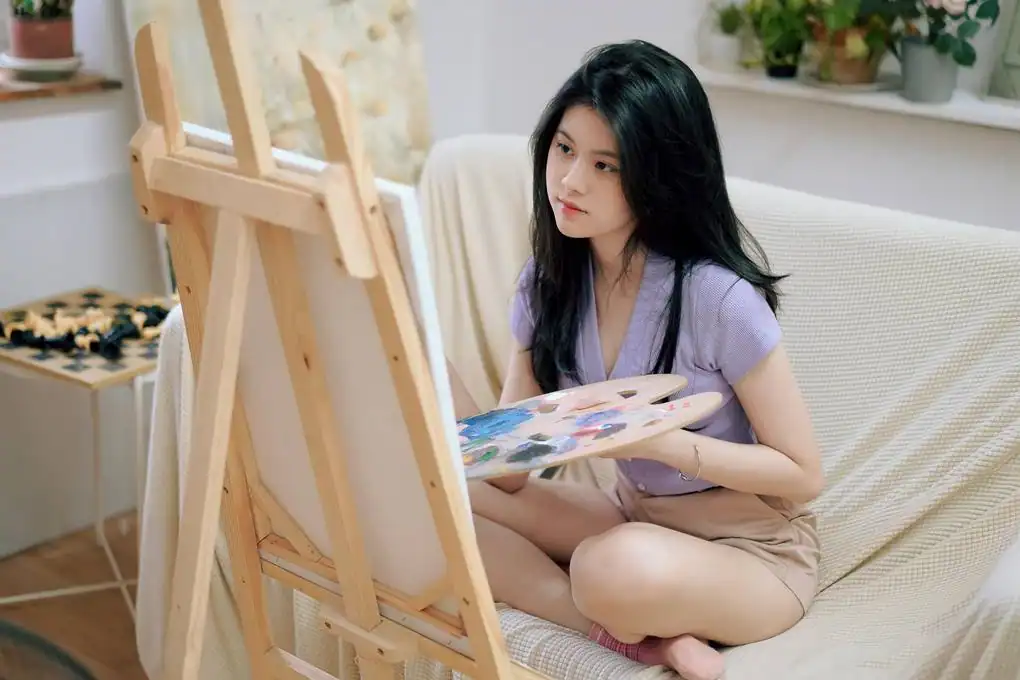Coloring has long been a popular activity, captivating both children and adults with its simplicity and creative potential. From childhood doodles to intricate mandalas for stress relief, coloring offers a unique blend of relaxation and self-expression. In recent years, a growing trend has emerged: turning personal photos into custom coloring pages. This innovative twist allows anyone to turn cherished memories-whether a family portrait, a scenic vacation snapshot, or a beloved pet-into a one-of-a-kind coloring masterpiece. Today’s online tools make it easier than ever to create these personalized pages, making them accessible to everyone, regardless of artistic ability. This article explores the benefits of custom coloring pages, how to create them, their creative applications, and practical tips for printing and sharing.
Why turn your photos into coloring pages?
More than just a fun pastime, coloring offers tangible benefits for people of all ages. For children, coloring is a powerful developmental tool. It strengthens fine motor skills as small hands grip crayons or pencils, improving dexterity and hand-eye coordination. The act of choosing colors and staying within lines sharpens focus and attention to detail, and fosters patience and discipline. Studies have shown that engaging in creative activities such as coloring can enhance cognitive development by helping children process spatial relationships and recognize patterns.
For adults, coloring has become a popular form of art therapy, often praised for its calming effects. The repetitive motion of coloring can lower stress levels and provide a meditative escape from daily pressures. Many find it a way to unplug from screens and reconnect with their creative side. Beyond the personal benefits, custom coloring pages add a deeply personal layer. By turning a meaningful photograph-perhaps of a family gathering, a milestone event, or a favorite landscape-into a coloring page, you create a unique keepsake that resonates emotionally. These pages make thoughtful, personalized gifts for birthdays, holidays, or special occasions, giving recipients a chance to engage with a memory in a hands-on, creative way.
The appeal of custom coloring pages lies in their versatility. They’re not just for personal enjoyment; they can be shared with friends, used in educational settings, or even incorporated into professional or therapeutic contexts. The ability to turn any photo into a coloring page opens up endless possibilities for creativity and connection.
How to easily turn a photo into a coloring page
Creating a coloring page from a photo is a straightforward process thanks to user-friendly online tools. With modern tools, you can easily turn a picture into a coloring page with just a few clicks. Here’s a step-by-step guide to get you started:
- Choose the right photo: Choose a high-quality image with good resolution, ideally at least 1200×1200 pixels. Photos with high contrast and clear outlines work best because they translate better to line art. For example, a portrait with distinct facial features or a landscape with bold shapes will produce better results than a blurry or dimly lit image. Avoid photos that are too busy or cluttered, as they can result in overly complex coloring pages that can be difficult to work with.
- Choose an online tool: Several platforms specialize in converting photos into coloring pages. Popular options include:
- Fotor: A versatile photo editing platform with a sketch filter that transforms images into clean line drawings. It’s intuitive and offers customizable settings to adjust line thickness and detail.
- PhotoMania: Known for its artistic effects, PhotoMania includes a coloring page filter that simplifies images into bold outlines perfect for coloring.
- Lunapic: A free tool with a “cartoon” or “sketch” effect that can create color-friendly images with minimal effort.
- Colorscape: A mobile app specifically designed to turn photos into coloring pages, with options to fine-tune the level of detail.
- Upload and edit: Upload your selected photo to the platform. Apply the sketch or outline filter and adjust settings like contrast or line strength to get the effect you want. Some tools allow you to preview and tweak the result before you finalize it. Aim for clear, bold lines with enough detail to make coloring fun, but not so intricate that it becomes overwhelming.
- Download and Save: When you are satisfied with the result, download the coloring page, usually as a PNG or PDF file. Save a high-resolution version to ensure quality when printing or sharing.
For the best results, keep these tips in mind when selecting your photo:
- Lighting: Bright, even lighting helps the tool distinguish key elements in the image.
- Contrast: High contrast between subject and background creates clearer outlines.
- Simplicity: Photos with fewer elements are easier to turn into coloring pages that are fun for all skill levels.
Many tools are free or offer free trials, though premium versions may unlock advanced features like higher resolution or additional filters. Experiment with different platforms to find the one that works best for you. The process is quick, often taking only a few minutes, and requires no artistic expertise, making it accessible to everyone.
Creative uses for custom coloring pages
Custom coloring pages are incredibly versatile and lend themselves to a wide range of applications. Here are some creative ways you can use them:
- Personalized Gifts: Turn a photo of a loved one, pet, or special moment into a coloring page for a unique gift. For birthdays, holidays or anniversaries, these pages add a thoughtful, handcrafted touch. Pair the page with a set of colored pencils or markers for a complete gift package.
- Educational Tools: Teachers can turn relevant images – such as historical figures, animals, or landmarks – into coloring pages for classroom activities. These pages make learning interactive and engage students in subjects such as history, science, or geography. For younger children, coloring pages of familiar objects can reinforce vocabulary or counting skills.
- Therapeutic Activities: In therapeutic settings, customized coloring pages can be used for mindfulness and relaxation. Therapists can use images related to a client’s personal experiences to encourage emotional processing through creative expression. For example, a coloring page based on a calming beach photo from a vacation can evoke positive memories while reducing stress.
- Event keepsakes: Create coloring pages for special occasions such as weddings, family reunions, or corporate events. A page featuring a photo of the couple, the event location, or a company logo can serve as a memorable activity for guests. These pages can also be included in event favors or shared digitally as a keepsake.
- Community Projects: Local arts groups or community centers can use custom coloring pages for group activities that encourage creativity and collaboration. For example, a neighborhood photo contest could culminate in a coloring book of the winning images, building community pride.
- Marketing and branding: Companies can turn brand-related images, such as logos or products, into coloring pages for promotional campaigns. These can be distributed at events, included in marketing emails, or offered as downloadable content on a website to engage customers in a fun and interactive way.
The possibilities are limited only by your imagination. Custom coloring pages can adapt to any context, making them a powerful tool for personal, educational or professional use.
Tips for printing and sharing your coloring pages
Once you’ve created your coloring page, bringing it to life by printing or sharing it requires a few considerations:
- Paper Choice: For physical coloring, choose paper that can handle your preferred medium. Standard printer paper will work for pencils or crayons, but thicker options such as cardstock (80-100 lb) are better for markers or watercolors to prevent bleeding. For professional results, consider matte art paper for a smooth coloring surface.
- Size and Scale: Most coloring pages are sized for home printing at A4 (8.5×11 inches), but you can adjust the size to fit your needs. For detailed designs, larger formats such as A3 (11×17 inches) offer more room for intricate coloring. Keep the resolution high (at least 300 DPI) to avoid pixelation.
- Home vs. Professional Printing: Home printers are convenient for short runs or personal use. Use high-quality settings and make sure you have enough ink for crisp lines. For larger quantities or professional finishing, local printers or online services such as Vistaprint or FedEx Office offer affordable options with consistent quality.
- Digital sharing: Share your coloring pages digitally as PDFs, which are universally compatible and maintain quality. Email them to friends and family, post them on social media, or include them in newsletters. For businesses, consider offering downloadable coloring pages on your website as a fun, engaging freebie.
- Presentation Tips: For gifts, present the coloring page in a folder or binder to keep it pristine. You can also create a mini coloring book by combining multiple pages and adding a custom cover with a title such as “Family Memories” or “Vacation Adventures.
By considering these factors, you can ensure that your coloring pages are both functional and visually appealing, whether you share them physically or digitally.
Conclusion
Turning your photos into coloring pages is a wonderful way to combine creativity with personal meaning. Whether you’re creating a unique gift, designing educational materials, or looking for a relaxing activity, custom coloring pages offer endless possibilities. They’re easy to create with accessible online tools, require no artistic skills, and can be customized for any occasion or audience. From fostering childhood development to providing a soothing creative outlet for adults, these pages bring joy and connection. Try turning your favorite photo into a coloring page today and discover the fun of bringing your memories to life through art.
Sandra Larson is a writer with the personal blog at ElizabethanAuthor and an academic coach for students. Her main sphere of professional interest is the connection between AI and modern study techniques. Sandra believes that digital tools are a way to a better future in the education system.





![‘Frankenstein’ Review – Guillermo del Toro’s Definitive Look At The Nature And Nurture Of Monstrosity [TIFF 2025] ‘Frankenstein’ Review – Guillermo del Toro’s Definitive Look At The Nature And Nurture Of Monstrosity [TIFF 2025]](https://cdn.geekvibesnation.com/wp-media-folder-geek-vibes-nation/wp-content/uploads/2025/10/Frankenstein-175_PF_20240430_20377_R-300x200.jpg)
![‘Wake Up Dead Man: A Knives Out Mystery’ Review – In Rian Johnson We Trust [LFF 2025] ‘Wake Up Dead Man: A Knives Out Mystery’ Review – In Rian Johnson We Trust [LFF 2025]](https://cdn.geekvibesnation.com/wp-media-folder-geek-vibes-nation/wp-content/uploads/2025/10/Wake-Up-Dead-Man-A-Knives-Out-Mystery-300x169.jpg)